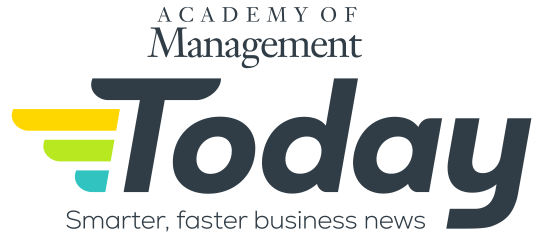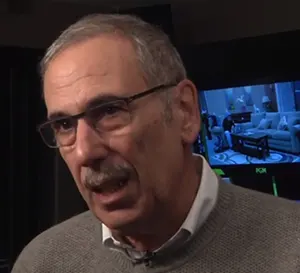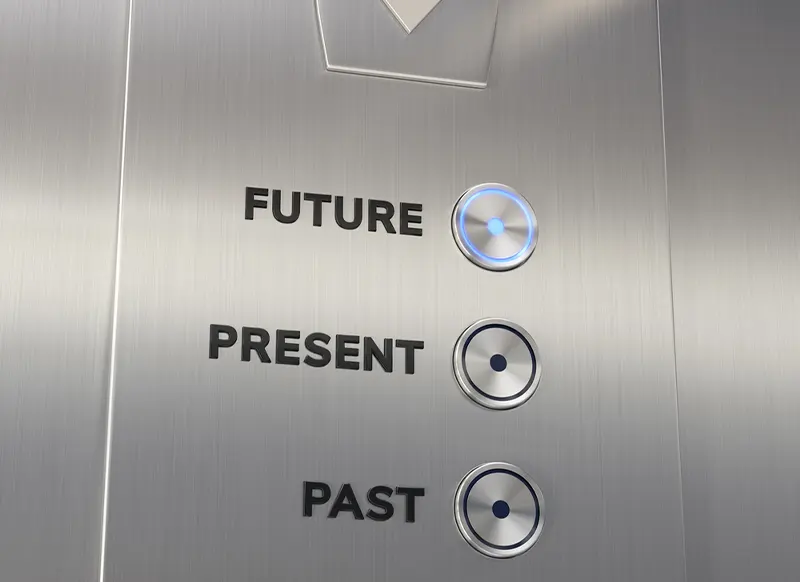Published on: April 10, 2025 at 8:22 pm
By Daniel Butcher
Crowdfunding platforms such as GoFundMe, through which hundreds of millions of people have donated more than $30 billion for mostly charitable causes since it launched in 2010, also provide nonfinancial support via social media. For example, in 2024 alone, GoFundMe users drove support for causes they care about through 55 million-plus shares across various social-media channels and via email.
Academy of Management Scholar Dean Shepherd of the University of Notre Dame said that crowdfunding has opened the world to a new way of doing good. This form of support for micro-entrepreneurs’ mini-projects affects the global economy.
“In some ways, it’s like the economy itself has these little probes into an uncertain environment, and some are going to fail, and some are going to gain traction,” Shepherd said. “And all of that’s a good thing, because it creates innovation, so we’re really just pitching out a whole lot of different potential opportunities; some are going to fail, and that’s perfectly fine, but some are going to be successful, and those successful ones may actually lead to something very interesting.
“Crowdfunding was quite an innovation,” he said. “It came from a change in regulation that actually freed up a lot of little bits of money for little entrepreneurs who may actually become highly successful entrepreneurs.
“It could be one of the greatest innovations to allow for more everyday entrepreneurship, and future superstars may actually even come from some of those smaller programs and initiatives that get off the ground thanks to crowdfunding.”
-
Daniel Butcher is a writer and the Managing Editor of AOM Today at the Academy of Management (AOM). Previously, he was a writer and the Finance Editor for Strategic Finance magazine and Management Accounting Quarterly, a scholarly journal, at the Institute of Management Accountants (IMA). Prior to that, he worked as a writer/editor at The Financial Times, including daily FT sister publications Ignites and FundFire, as well as Crain Communications’s InvestmentNews and Crain’s Wealth, eFinancialCareers, and Arizent’s Financial Planning, Re:Invent|Wealth, On Wall Street, Bank Investment Consultant, and Money Management Executive. He earned his bachelor’s degree from the University of Colorado Boulder and his master’s degree from New York University. You can reach him at dbutcher@aom.org or via LinkedIn.
View all posts
Up next....
Research Findings Are Not Reaching Business Leaders
Source: Shutterstock
By Nick Keppler
There are now about 400 journals for management as an academic field, producing about 12,000 published articles a year in total. However, top decision-makers rarely learn anything from them, said Academy of Management Scholar Herman Aguinis of the George Washington University School of Business.
“Many of us are concerned that the research we do is not being used to the extent that we would like, and it’s called a research-practice gap,” Aguinis said. “Also, there’s a research-policy gap,” stemming from political leaders’ lack of familiarity with research produced in the field of management.
This gap is particularly frustrating, said Aguinis, because scholars on management and organizations have produced a wealth of scientifically sound research on issues that have dominated the news in 2025, including the downsizing of the federal government, the measurement of job performance, discrimination and diversity, equity, and inclusion policies, and the implementation of AI in workplaces.
“If you want to build a bridge, you will talk to the top engineers, but management scholars are not consulted with the same regularity,” said Aguinis.
This is not entirely the fault of those who could potentially benefit from our research, Aguinis added. Academic journals are often insular and publish articles that only make small contributions to our understanding of critical organizational phenomena. Also, the compensation and reward systems motivate academics to write mainly for other academics, not managers, business leaders, and decision-makers.
“For several reasons, much of our research is not aimed at affecting practice,” Aguinis said. “If you read the typical article of, let’s say, 20 pages, you may find one or two paragraphs at the end saying ‘implications for practice.’”
The research is not lost on everyone. A small number of elite companies look to academia to improve performance. Google is well-known for hiring Ph.D. holders, not just for computer-science roles but also for management and creative jobs. Marriott is a sponsor of doctoral development programs.
These companies reap the benefit in reputation, said Aguinis, often appearing in lists such as Fortune Magazine’s “Best Companies to Work For” series.
“All of these companies, all of them, employ Ph.D.s who actually read the research, and they try to implement leadership strategies and management practices that are consistent with what research says aligns with best-practice evidence as published in scholarly journals,” he said.
-
Nick Keppler is a freelance journalist, writer, and editor. He has written extensively about psychology, healthcare, and public policy for The New York Times, The Washington Post, Slate, The Daily Beast, Vice, CityLab, Men’s Health, Mental Floss, The Financial Times, and other prominent publications (as well as a lot of obscure ones). He has also written podcast scripts. His journalistic heroes include Jon Ronson, Jon Krakauer, and Norah Vincent.
Before he went freelance, he was an editor at The Houston Press (which is now a scarcely staffed, online-only publication) and at The Fairfield County Weekly (which is defunct).
In addition to journalism, he has done a variety of writing, editing, and promotional development for businesses and universities, including the University of Pittsburgh and Carnegie Mellon University, and individuals who needed help with writing projects.
View all posts
Up next....
Why Success Can Be the Enemy of Innovation in the Age of AI
Source: Shutterstock
By Jason Collins
A new Pew Research Center report reveals that public optimism remains low regarding the potential impact of AI in the workplace. However, refusing to work with new technologies can cause even the largest organizations to fail as this technology changes the game across many industries.
Academy of Management Scholar Wendy Smith of the University of Delaware reveals that it isn’t the small businesses that are most at risk, but rather larger organizations that choose to rely on what they know works. Smith calls this the paradox of success.
“The companies who are at the top of their market have the most to lose and therefore don’t want to take risks and thus are the most entrenched in what they already do,” Smith said. “Researchers call this the ‘paradox of success’ where successful companies are the ones that fail to adopt new technologies and innovation.”
Because smaller organizations don’t have this burden, they have nothing keeping them from trying new things and adopting new technologies such as AI and robotic process automation. History shows us that success can be an enemy of innovation. Smith draws parallels to brands such as Kodak and Polaroid, which failed to make the digital photography transition.
“BlackBerry was this amazing early force of the smartphone but could not compete when brands like Apple came into the market with updated technologies,” Smith said. “Blockbuster Video couldn’t make the transition from VHS tapes and DVDs to streaming when Netflix then took over.
“So, we see that story happen again and again and again,” she said.
If the past has taught us anything, it is that relying on past success without monitoring new technologies, tracking consumers’ preferences, and cultivating boldness in strategic planning prevents innovation.
“I think we’re going to see the same thing now,” Smith said. “And so there is wisdom in ‘Don’t throw out the baby with the bathwater.’
“It’s totally new technology, but leaders should be learning from history what it means to innovate within an existing company,” she said.
Up next....
The New Reality: Leaders Have Less Control, Need More Courage
Source: Shutterstock
By Jason Collins
For decades, the prevailing wisdom for business leaders was to stay out of politics. Neutrality was considered the safest, most responsible stance for corporate executives and board members to take. But today that approach is increasingly untenable. From the COIVID-19 pandemic to intensifying political polarization and controversy, leaders now find themselves at the center of public debates whether they choose to engage with them or not.
For leaders, silence is a statement, and political neutrality is no longer a viable option, according to Academy of Management Scholar Wendy Smith of the University of Delaware.
“It used to be that there were checks and balances in the U.S. government,” Smith said. “The market was separate from the state, or companies were separate from the government, and that is no longer the case.”
To survive and thrive in this era when economics and politics collide to sow chaos, Smith said that leaders should “talk about strategizing as a verb rather than having a strategy.” For Smith, this means considering “the conditions that we need to bring a team together to be agile and moving, even as we need to communicate out to our people some sense of security.”
Strategic decisions from supply-chain choices to remote, hybrid, or return-to-office work policies have become flashpoints in boardroom and C-suite conversations and political discourse. Leaders now must navigate complex social, economic, and political terrains, speak out on pressing issues, and align their actions with values that resonate with stakeholders—employees, shareholders, customers, and communities alike.
Companies’ leaders have had to deal with uncertainties for a long time, but Smith said many of their strategies and their organization’s systems are antiquated. According to Smith, nowadays leaders are learning that they need to “communicate to their people, optimize their processes, and cultivate openness in their conversations, but not pretend that there’s certainty of what the future will bring, because that’s just false hope.”
Smith acknowledged that leaders are faced with unique challenges in this current political landscape characterized by dissention, frustration, anger, and unpredictability, making it difficult to navigate socioeconomic volatility.
“One of the consequences of this highly polarized world is that leaders, because of the polarization, are being attacked for polarizing positions,” Smith said.
In this current era, leadership is less about having definitive answers and more about asking incisive questions, listening to a range of perspectives, evaluating various responses to difficult circumstances and controversial issues through an ethical lens, and having the courage of one’s convictions.
“We want leaders who are competent and courageous, not stepping away from that responsibility to take a stand and speak up for what’s right because it is so risky,” Smith said.
-
Daniel Butcher is a writer and the Managing Editor of AOM Today at the Academy of Management (AOM). Previously, he was a writer and the Finance Editor for Strategic Finance magazine and Management Accounting Quarterly, a scholarly journal, at the Institute of Management Accountants (IMA). Prior to that, he worked as a writer/editor at The Financial Times, including daily FT sister publications Ignites and FundFire, as well as Crain Communications’s InvestmentNews and Crain’s Wealth, eFinancialCareers, and Arizent’s Financial Planning, Re:Invent|Wealth, On Wall Street, Bank Investment Consultant, and Money Management Executive. He earned his bachelor’s degree from the University of Colorado Boulder and his master’s degree from New York University. You can reach him at dbutcher@aom.org or via LinkedIn.
View all posts
Up next....
Everyone Will Suffer in the Wake of Trump Administration’s Research Cuts
Source: Shutterstock
By Paul Friedman
This year, the Trump administration has fired many government researchers, canceled scientific and medical research grants, and targeted leading universities, including Harvard, with debilitating funding freezes. Fear of reprisal has caused many scientists, doctors, professors, and university administrators to opt for silence instead of speaking up to defend the research that is getting the ox.
Academy of Management (AOM) Scholar Peter Bamberger of Tel Aviv University says much of the research produced by him and his colleagues, including many AOM members, has a day-to-day impact on industry practitioners, including organizational leaders and managers. Cuts in federal funding for research will have a negative impact on industry, as well as researchers, colleges and universities, and other research institutions.
“What we publish in our primary journals have to be both theoretically important and have practical relevance,” Bamberger said. “It’s got to be interesting from a theoretical perspective and intellectual perspective, and it’s got to have some sort of surprising element—going against conventional wisdom—but it also has to translate that surprising finding into something that managers can do something about.
“And there are thousands of organizational consultants who read the findings published in our journals and then translate that into actual practice in organizations,” he said.
Bamberger points out that a great deal of research is specifically aimed at examining current practices by managers and their efficacy. Recently, he published a study of the managerial approach called design thinking, which focuses on understanding clients’ needs and designing innovative solutions.
“Design thinking has been around for about 10 years,” Bamberger said. “It’s an approach to create more innovative ways of boosting learning and finding innovative solutions to common problems or sometimes even really wicked problems.
“It became a fad and a lot of organizations adopted it, but no one ever bothered to actually assess whether or not it has an impact and whether this impact is any greater than other types of learning-oriented interventions, like team building,” he said.
Bamberger and research colleagues designed a field experiment to test the impact of design thinking as a team learning intervention. They compared over time what happens in terms of the efficiency and productivity of teams using different interventions.
“Is design thinking more efficacious than an alternative?” Bamberger said. “And we found out that in fact it is, and we actually demonstrate the mechanism by which it operates and why it’s more effective than other mechanisms.
“So these types of practical implications are useful to managers and to the extent that we don’t have funding necessary to do this type of research, everybody suffers,” he said.
-
Paul Friedman is a journalist who worked for 45 years at the three major news networks. He began as a writer and reporter and then became a producer of major news broadcasts, including Nightly News and the Today show at NBC, and World News Tonight with Peter Jennings at ABC. He also served as Executive VicePresident of News at ABC and CBS. Later, he taught journalism as a professor at Columbia University, New York University, and Quinnipiac University. Friedman is now semi-retired and lives with his wife in Florida.
View all posts
Up next....
Why Doing Meaningful Work Makes Time Fly
By Daniel Butcher
“When you sit with a nice girl for two hours, it seems like two minutes; when you sit on a hot stove for two minutes, it seems like two hours. That’s relativity.” —Albert Einstein
When people talk about time at work, they usually don’t think about subjective time, how we perceive time differently, for example, at work vs. on vacation, noted Academy of Management Scholar Abbie Shipp of Texas Christian University, who coauthored an Academy of Management Annals article on that topic with Karen Jansen of Henley Business School.
“A key to understanding subjective time is thinking about how people interpret time itself—workers often ask themselves, ‘Is there meaning in what I’m doing? Where is this leading me?’” Shipp said. “Expense reports feel meaningless, and most people consider them to be a waste of time, as opposed to, ‘I worked on this big project—it’s going to save lives, for example, if you’re in the medical community.’
“So the same amount of time spent on one sort of task or project vs. another can feel different and have different meaning, and that interpretation of time is really important for how people think and feel about their job and career,” she said.
“Leaders need to consider this different view of time when engaging their teams.”
A sample of Shipp’s AOM research findings:
-
Daniel Butcher is a writer and the Managing Editor of AOM Today at the Academy of Management (AOM). Previously, he was a writer and the Finance Editor for Strategic Finance magazine and Management Accounting Quarterly, a scholarly journal, at the Institute of Management Accountants (IMA). Prior to that, he worked as a writer/editor at The Financial Times, including daily FT sister publications Ignites and FundFire, as well as Crain Communications’s InvestmentNews and Crain’s Wealth, eFinancialCareers, and Arizent’s Financial Planning, Re:Invent|Wealth, On Wall Street, Bank Investment Consultant, and Money Management Executive. He earned his bachelor’s degree from the University of Colorado Boulder and his master’s degree from New York University. You can reach him at dbutcher@aom.org or via LinkedIn.
View all posts
Up next....
Why Mental Time Travel at Work Matters
By Daniel Butcher
While many self-help gurus advise living in the moment, most people’s thoughts also tend to wander to the past or the future. That has implications for how people interact with each other and work together.
Academy of Management Scholar Abbie Shipp of Texas Christian University, who coauthored an Academy of Management Annals article on that topic with Karen Jansen of North Carolina State University, said that when people talk about time at work, they’re almost always referring to “objective time.”
“Time is measured by the clock or the calendar, so when workers think, ‘What time is a meeting scheduled?’ or ‘Am I managing my time well?’ or ‘December feels different than June,’ they’re always referring back to what they think are fixed elements of time—the clock or the calendar,” Shipp said. “But my research over the years has really been looking at people’s subjective experience and interpretation of time, and when we went into the literature to really explore this more in depth, we found that this is mostly hidden.
“One of the main elements of subjective time is that people mentally time travel,” she said. “They remember the past and they forecast the future.
“At any given moment, 50% of your thoughts are spent in another period of time; you aren’t in the present moment—you’re thinking about different periods of time.”
Other research that Shipp has done shows that people have characteristic tendencies to mentally stay in one or more periods of time. Some people tend to think about the past more often, while others like to plan and imagine what will happen in the future.
“I’m very future-focused, whereas my husband is very much present- and past-focused,” Shipp said. “If you think about it from a work perspective, if people are thinking about different things, if their minds are in different places, they can have conflicts, or they can have complementarities.
“That kind of subjectivity has important implications for team composition or, the flip side of it, team conflict,” she said.
A sample of Shipp’s AOM research findings:
-
Daniel Butcher is a writer and the Managing Editor of AOM Today at the Academy of Management (AOM). Previously, he was a writer and the Finance Editor for Strategic Finance magazine and Management Accounting Quarterly, a scholarly journal, at the Institute of Management Accountants (IMA). Prior to that, he worked as a writer/editor at The Financial Times, including daily FT sister publications Ignites and FundFire, as well as Crain Communications’s InvestmentNews and Crain’s Wealth, eFinancialCareers, and Arizent’s Financial Planning, Re:Invent|Wealth, On Wall Street, Bank Investment Consultant, and Money Management Executive. He earned his bachelor’s degree from the University of Colorado Boulder and his master’s degree from New York University. You can reach him at dbutcher@aom.org or via LinkedIn.
View all posts
Up next....
Why Work Frenemies Are More Common than Work Friends
By Daniel Butcher
In our portfolio of relationships, we want as many friends and as few enemies as possible. But many work relationships aren’t clearly positive or negative; instead, they’re more neutral, like cordial acquaintances, or even ambivalent. Think “frenemies,” two-faced colleagues, or polite rivals. While having mixed feelings about a coworker sounds awkward—and research studies have shown that frenemies increase each other’s stress and blood pressure—ambivalent relationships also tend to boost creativity, adaptability, and productivity by fueling a competitive spark.
“Ambivalent relationships have always been relatively common in organizations, as they are breeding grounds for having to simultaneously collaborate and compete, for example,” said Academy of Management Scholar Jessica Methot of Rutgers University and the University of Exeter. “But because some of the more complicated interpersonal interactions were paused or transformed during the COVID-19 pandemic, workplace relationships seemed to become more one-dimensional.
“Either someone was unreliable or difficult to work with, or they were motivated and helpful,” she said. “Now, in the ‘post-pandemic’ world of work, we’re starting to see ambivalent relationships emerge again.”
Methot has been doing research to better understand how and why friendships necessarily blur work and non-work boundaries to create unique tensions. That holds true for both remote and in-person work as well.
“It’s important for people to understand how to balance when we’re exposing our personal or intimate information to someone who we work with, and the paradox and the complications that come along with that,” she said. “A lot of people want to have those close relationships and those experiences with the people who they work with but maybe don’t really understand how that can turn against them.
“The issue with workplace friendships that makes them distinct and unique from relationships or friendships outside of work is that the shared space is the office, and so the friendship is founded on a professional work relationship, and those two things tend to compete with each other.”
Especially for team members of comparable seniority, it can be difficult to reconcile the fact that they are collaborating with each other at the same time that they may be competing with each other.
“A formal work relationship is transactional, professional, and non-discretionary, versus our private, more discretionary, informal friendships, and those two things tend to conflict with each other,” Methot said. “How do we balance these paradoxes or tensions that we end up facing when we try to become friends with people who we work with?
“It ends up potentially creating these rivalries—we might be both going up for the same promotion,” she said. “I want to be proud of my friend and happy for him or her, but I’m also jealous, and so this started leading into my research understanding how we feel ambivalently towards our friendships.
“Work friends must deal with this emotion of ambivalence, where we might feel joy or pride and jealousy, and the question is, ‘How do we balance those emotions?’”
A sample of Methot’s AOM research findings:
-
Daniel Butcher is a writer and the Managing Editor of AOM Today at the Academy of Management (AOM). Previously, he was a writer and the Finance Editor for Strategic Finance magazine and Management Accounting Quarterly, a scholarly journal, at the Institute of Management Accountants (IMA). Prior to that, he worked as a writer/editor at The Financial Times, including daily FT sister publications Ignites and FundFire, as well as Crain Communications’s InvestmentNews and Crain’s Wealth, eFinancialCareers, and Arizent’s Financial Planning, Re:Invent|Wealth, On Wall Street, Bank Investment Consultant, and Money Management Executive. He earned his bachelor’s degree from the University of Colorado Boulder and his master’s degree from New York University. You can reach him at dbutcher@aom.org or via LinkedIn.
View all posts
Up next....
Shadow Networks Foster Collaboration
By Daniel Butcher
People often collaborate with colleagues across departments in ways that benefit their organization, sometimes sparking inter-team creativity and productivity. Human resources (HR) can either kindle or pour cold water on those fires.
Academy of Management Scholar Jessica Methot of Rutgers University and the University of Exeter—who cowrote an Academy of Management Review article on this topic with Emily Rosado-Solomon of Babson College and David Allen of Texas Christian University and University of Warwick—said that managers routinely search for ways to foster collaboration and break down silos by rotating employees or creating cross-functional teams. Other effective tactics include fostering networks through company retreats or company-sponsored volunteer service among employees across departments.
“I’m really interested in the interactions and communication among employees in a way that is outside the formal organizational chart,” Methot said. “The functioning of the informal organization is often a shadow network behind the official organizational chart.
“We know that there’s a lot of dynamics that occur in the ways that people interact and communicate and build trust and develop friendships and gossip in organizations, and organizational leaders often try to prioritize building a climate or a culture where people are creating these types of networks, where they feel a sense of psychological safety and are comfortable sharing information and asking questions,” she said. “But they don’t often know exactly what HR policies are going are going to affect those networks, and how they’re going to affect those networks.
“It’s crucial to track and analyze how a formal HR policy impacts the informal infrastructure in an organization, how people are interacting with each other, whether they form mentoring relationships or developmental relationships with each other, and whether they form close friendships, even when they traditionally had only worked together as team members.”
A sample of Methot’s AOM research findings:
-
Daniel Butcher is a writer and the Managing Editor of AOM Today at the Academy of Management (AOM). Previously, he was a writer and the Finance Editor for Strategic Finance magazine and Management Accounting Quarterly, a scholarly journal, at the Institute of Management Accountants (IMA). Prior to that, he worked as a writer/editor at The Financial Times, including daily FT sister publications Ignites and FundFire, as well as Crain Communications’s InvestmentNews and Crain’s Wealth, eFinancialCareers, and Arizent’s Financial Planning, Re:Invent|Wealth, On Wall Street, Bank Investment Consultant, and Money Management Executive. He earned his bachelor’s degree from the University of Colorado Boulder and his master’s degree from New York University. You can reach him at dbutcher@aom.org or via LinkedIn.
View all posts
Up next....
How Tech Can Support Connecting via Remote Work
By Daniel Butcher
Some people hate virtual meetings and calls and prefer face-to-face in-person interactions. Others are uncomfortable in a traditional office setting and prefer communicating in ways that are mediated by technology. Many people fall somewhere in between. But small talk is valuable for everyone.
Academy of Management Scholar Jessica Methot of Rutgers University and the University of Exeter—who cowrote an Academy of Management Journal article on that topic with Emily Rosado-Solomon of Babson College, Patrick Downes of the University of Kansas, and Allison Gabriel of Purdue University—said that she has talked to a lot of people whose teams or organizations are now using Slack, Teams, or other communication software and provided the following advice:
“Set up informal interaction channels over Slack to give employees an outlet where they can talk about exercise or leisure or any hobbies that they have that doesn’t necessarily have to implicate work-related topics,” Methot said. “Giving them an outlet to talk informally with each other can be really helpful.”
This doesn’t always apply to, say, neurodivergent individuals or other people with disabilities or people who are from minoritized backgrounds, or even expatriates, she noted.
“Small talk is actually really challenging for people who don’t understand American norms, and we’ve heard that from a lot of immigrants, expatriates who don’t have the context for how to get involved in the conversations with those familiar with a particular country’s cultural norms and trends,” Methot said. “For Americans, it seems accepted and relatively normal.
“We understand that it’s polite to engage in conversation, but we talk about topics that they might not be familiar with, things related to hobbies or sports or network television, and they feel excluded,” she said
“Also, the idea of returning to the office might not feel as accepting or welcoming for certain populations, like those who are neurodivergent.”
While many people bemoan the disruption to traditional nine-to-five office schedules, for many others such as parents and people with disabilities, remote or hybrid work arrangements are a breath of fresh air.
“For some people, technology has really vastly improved their social circles, work-life balance, and ability to present themselves more authentically,” Methot said.
“Stigmatized groups might struggle to live and work in their environment when they have disabilities, or for individuals who are neurodivergent, it’s harder for them to form in-person connections, and so interacting online can really be a lifeline for them,” she said.
“I want to make sure that I’m addressing the fact that encouraging small talk isn’t a blanket set of practices or results that apply to everyone.”
A sample of Methot’s AOM research findings:
-
Daniel Butcher is a writer and the Managing Editor of AOM Today at the Academy of Management (AOM). Previously, he was a writer and the Finance Editor for Strategic Finance magazine and Management Accounting Quarterly, a scholarly journal, at the Institute of Management Accountants (IMA). Prior to that, he worked as a writer/editor at The Financial Times, including daily FT sister publications Ignites and FundFire, as well as Crain Communications’s InvestmentNews and Crain’s Wealth, eFinancialCareers, and Arizent’s Financial Planning, Re:Invent|Wealth, On Wall Street, Bank Investment Consultant, and Money Management Executive. He earned his bachelor’s degree from the University of Colorado Boulder and his master’s degree from New York University. You can reach him at dbutcher@aom.org or via LinkedIn.
View all posts
Up next....
The Importance of Social Rituals at Work
By Daniel Butcher
Whether you’re a CEO or rank-and-file employee, and no matter how good you are at the nuts-and-bolts aspects of your job, ignore social-emotional factors in the workplace at your peril.
Academy of Management Scholar Jessica Methot of Rutgers University and the University of Exeter—who coauthored an Academy of Management Journal article on that topic with Emily Rosado-Solomon of Babson College, Patrick Downes of the University of Kansas, and Allison Gabriel of Purdue University—said that it’s important to ask ourselves questions such as: Am I feeling especially disconnected today? Have I talked to anyone outside of my home?
“We can assess our own social-emotional health and how much time we spend interacting with other people—don’t fall victim to mistakenly seeking solitude,” Methot said. “Some people tend to avoid small talk, either because they overestimate how awkward they seem or they don’t see any benefits to it.
“Part of it is elevating and highlighting the benefits of having small talk, because it isn’t difficult; it doesn’t take too much effort; it isn’t too intimate, and it still helps boost our energy,” she said. “Remotely, we want to think about how we can recreate or create new social rituals for our teams.”
Social rituals at work include weekly check-ins, project retrospectives, and celebratory events for milestones or achievements.
“If we’re bringing our team back into the office, let’s say we’ve got a group who was working remotely or is working in a hybrid schedule, we might not be able to go back to the way that it was and recreate the exact workplace situation or climate that we had before,” Methot said.
Most people—bosses and employees alike—have to adapt to changing work environments. Creating new social rituals fosters better teamwork and helps with maintaining a positive culture.
“What does this new social ritual look like? What does our team need now? How can we innovate but still ensure that we use that as a norm in our team or in our organization,” Methot said. “We can also integrate spontaneous conversations into our remote work ecosystem, so we and colleagues could try setting our availability, specifying times for when others can connect with us.
“A social ritual could be as simple as encouraging team members to join meetings five minutes early to catch up informally and say, ‘Hey, how’s everyone doing?’”
A sample of Methot’s AOM research findings:
-
Daniel Butcher is a writer and the Managing Editor of AOM Today at the Academy of Management (AOM). Previously, he was a writer and the Finance Editor for Strategic Finance magazine and Management Accounting Quarterly, a scholarly journal, at the Institute of Management Accountants (IMA). Prior to that, he worked as a writer/editor at The Financial Times, including daily FT sister publications Ignites and FundFire, as well as Crain Communications’s InvestmentNews and Crain’s Wealth, eFinancialCareers, and Arizent’s Financial Planning, Re:Invent|Wealth, On Wall Street, Bank Investment Consultant, and Money Management Executive. He earned his bachelor’s degree from the University of Colorado Boulder and his master’s degree from New York University. You can reach him at dbutcher@aom.org or via LinkedIn.
View all posts














